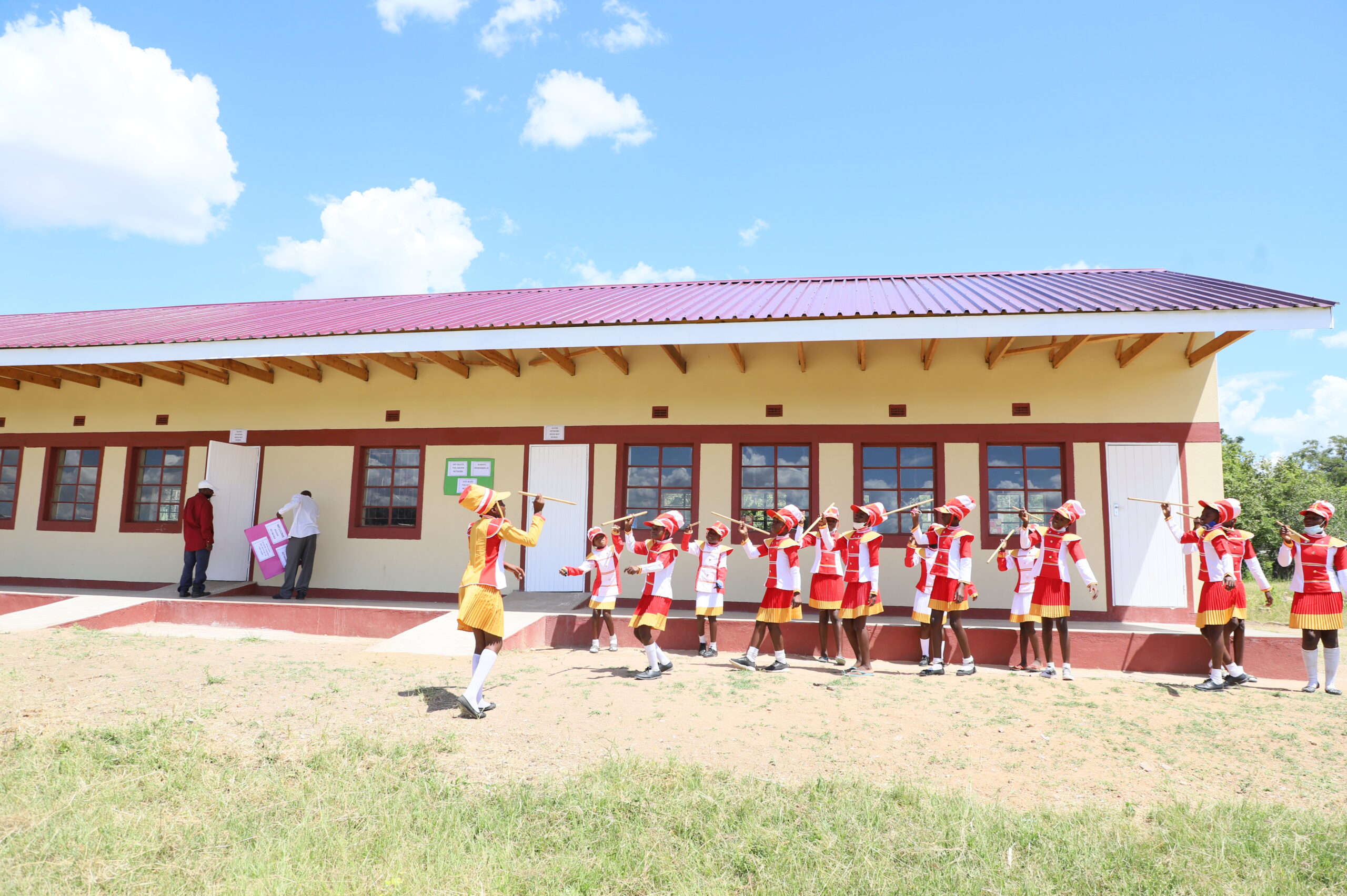
SYDNEY KAWADZA MOST schools in Masvingo province’s Bikita District Masvingo, established in the 1940s, are clocking more than 80 years and have, over the years, developed into death traps, a case of the devastating effects of climate change.
With age creeping in, the schools, also constructed with cheap building materials, could not have weathered the storm when Cyclone Idai hit Zimbabwe around March 15, 2019.

The communities in Bikita could have avoided disaster when tragedy hit, safety for school children in the old school buildings was not guaranteed when storms hit again.
And to avoid disaster, if any storm builds up, authorities would dismiss learners as well as abandon lessons whenever rains start pounding. Teachers at Nerumedzo and Mutombo Primary schools share tales of how the school had to break whenever dark clouds started building up.
Nerumedzo Primary School headmaster Nelia Mukuwi, in an interview recently, shared the heartbreak of abandoning lessons whenever there is a potential rainstorm.
“On March 15, 2019, the school was affected by Cyclone Idai and we lost roofing material on classrooms, some of which were completely destroyed.
“The classrooms that were still standing after the storm developed huge cracks that make it difficult to house the school children during classes,” Mukuwi said.
“After the cyclone, learners would boycott classes when it rained or in the event of potential storms. When we feel a storm is building, we would dismiss classes.”
- Chamisa under fire over US$120K donation
- Mavhunga puts DeMbare into Chibuku quarterfinals
- Pension funds bet on Cabora Bassa oilfields
- Councils defy govt fire tender directive
Keep Reading
Nerumedzo School in Ward 16 was established by the Roman Catholic Church in 1945.
Mukuwi’s sentiments were echoed by Makondo Primary School headmaster Emmanuel Tabvirakare as he narrated similar problems at the school. Makondo School in Ward 19 was established in 1957.
“The structures were of poor quality and if you move around you see that the buildings are death traps. After Cyclone Idai, the buildings developed cracks,” Tabvirekare said.
“Even the foundations were built using stones and little cement. When the cyclone hit, the foundations also moved.”
He said before the initiative, learners at Makondo were greatly compromised but the new buildings improved their work.
The two schools have, however, received assistance from Silveira House’s “Beyond Cyclone Idai programme”.
Under the programme, the Xavier network-sponsored initiative saw the construction of new classroom blocks for the two schools.
Silveira House built two classroom blocks each with two classrooms and 10 squat-hole latrines at the schools.
The development agency has also gone further to build a new office block for the ministry of Health and Child Care at Nyika Growth Point and an incinerator at Mashoko Hospital. Under the initiative, Silveira House also rehabilitated the Chigumisirwa Piped Water Scheme in Ward 16. The scheme was also destroyed by Cyclone Idai.
A villager, Vimbai Zengeya, said the classrooms have since transformed the learners’ attitude towards school.
“The all-weather structures ensure comfortable learning and we have been motivated as parents to make sure we protect the school hence we provide security for the buildings,” Zengeya said.
At Nerumedzo, Mutiwi, school enrolment had fallen to 120 pupils after the disaster rising to 445 following Silveira House’s intervention.
Nerumedzo School development committee chairperson Lazarus Mugobo said the community was eager to protect the new buildings.
“We are motivated that despite the little money we get from school fees, we are trying to pool resources to buy a fence so that we protect the new buildings. The community can utilize the school as an evacuation centre in the event of another disaster,” Mugobo said.
Ward 16 is in Natural Region 3 and is in the path of cyclones. In an interview, Bikita district development coordinator, Bernard Hadzirapi said the area, with a population of approximately 200 000, is prone to climate change effects especially tropical storms.
“Among the cyclones that have affected Bikita Districts was Cyclone Idai which affected households and destroyed infrastructure including roads, schools and dip tanks. A number of partners have assisted us including Silveira House,” Hadzirapi said.
Bikita district schools’ inspector James Mahofa confirmed that aged-school structures were hit by Cyclone Idai.
“Before setting up infrastructure, we engage the communities. We had several meetings with these people so as to ensure that we have a buy-in of the project from communities,” Mahofa said.
Nerumedzo is at the highest point of Bikita and villagers cleared the roads for vehicles transporting building materials.
Bikita DDF district coordinator, Eunica Chiome said the Beyond Cyclone Idai programme brought relief to Chigumisirwa.
“The piped water scheme was affected by Cyclone Idai leading to serious water problems. Villagers resorted to unsafe water sources including water from dried river beds. Silveira House upgraded and introduced a solar system which means the villagers are getting water with fewer expenses,” Chiome said.
Chairperson of the water scheme Eunice Magocha said the community has since employed security to protect solar panels.
“We also collect nominal fees from members so we can engage a plumber whenever we have challenges with the pump or pipes,” she said.
Ward 16 environmental health technician, Enath Mahodzo said the solar-powered submersible pump ensures that the community gets consistent water supplies.
“Borehole water from taps is well-protected ensuring that they have safe water. We always do biological analysis and we know that the water is safe for consumption because the source is protected,” Mahodzo said.
The Beyond Cyclone Idai programme started in 2019 as part of Silveira House’s post-disaster construction and was implemented in Zimbabwe, Mozambique and Malawi.
“We are aware of the destruction that was caused by the cyclone in the countries like Zimbabwe, Mozambique and Malawi.” Silveira House executive director Arnold Moyo said in an interview.
“So one concept is key nowadays that is focused on climate change is the concept of building back better. When it comes to the construction of buildings, we ensure that the buildings are able to withstand such disasters, in terms of the materials used, technology and in terms of sustainability, further beyond the life span of the project,” he added.
Moyo said there were plans to scale up the initiatives while moving to other communities including those in Matabeleland North and South.











